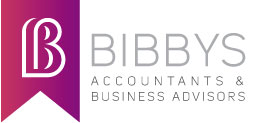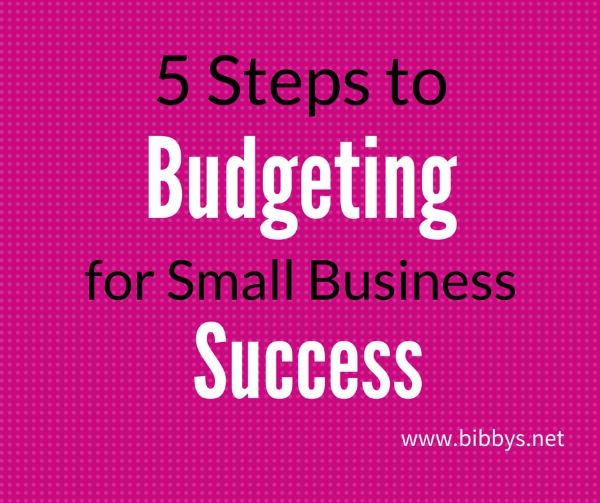When you first decided to launch your small business it’s likely you were brimming with enthusiasm and ideas to take your new product or service to market, dreaming of ways to turn your expertise into business a success.
It’s unlikely that a secret passion for budgeting played a part in your decision to become a small business owner or entrepreneur. However despite the fact that budget planning, and on-going budget management, are among the least exciting aspects of business ownership, having a budgeting system that you are in control of is absolutely critical to the future success of your small business.
Here we share 6 key steps to creating and keeping on top of your business budgets to enable you to focus your energies, efforts and expenditures in the right areas, and keep your business profitable.
Step 1 – Draw up a sales budget
The first key step to controlling the financial success of your business is to predict how much you expect to sell of each product or service you offer each month over the coming year, and how much turnover this will generate (remember to exclude VAT if you have registered for it, The VAT registration threshold is £82,000).
When making your predictions, start by looking at past sales performance, for example regular customers who have ordered in a predictable fashion, and predict how many of them will continue in the same vein. Also look at your prospects, and how many new customers you think you can realistically attract each month.
It is also useful to look at what is happening with comparable businesses in your sector, to gauge whether the next 12 months will be a period of growth for your business, or one of increased competition. You need to factor in how well your competitors are doing, your ability to meet demand, the state of the overall market and any anticipated price changes, marketing activity, etc.
Once you have made your predictions, decide whether they look realistic, and if not, go back to the drawing board to re-look at your calculations until you come up with realistic figures for your sales budget.
Step 2 – Set an expenditure budget
The next crucial step is to turn your attention to your estimated monthly costs over the next year. Costs should be divided into two categories: fixed costs (or overheads) and variable costs.
Fixed costs are the costs your business will incur that are not dependent on the volume of goods or services you produce. They might include rent, business rates, interest on loans, employee wages, utility costs (including telecoms) and insurance.
Variable costs are the costs that will change according to how many goods or services you sell, and therefore they will be tied in with the figures you predicted in your sales budget. Variable costs might include raw materials, delivery and distribution, and overtime or temporary staff.
List them separately and as a total by month so you know what business costs to expect over the coming year.
Step 3 – Create a cash budget
Once you have defined your sales and expenditure budgets, use them to create a cash budget. This is a consolidated budget that will predict your actual monthly cash flow – which is well-known to have the power to either make or break a business.
When creating your cash budget, timing is key. You need to be realistic about when you expect to be paid for sales, and when you will have to pay out for your costs such as staff salaries and office rent. Don’t budget too close to the bone as there will inevitably be some bad debts – most businesses unfortunately experience a certain level of sales that aren’t paid for.
Be sure to also factor in additional incomings and outgoings that your business will be receiving and paying, such as tax payments, capital expenditure and VAT payments.
Using all this information, look at your current bank balance and work out how much cash you plan to have in your bank account at the end of each month, for the year.
Step 4 – Use your budgets to identify potential problems
Keeping your budgets accurate and up-to-date will enable you to stay in control of your business. You will spot any potential problems on the horizon and be in a position to take corrective action before they become reality. Problem areas your budget might highlight include underperformance, running out of cash and overtrading.
It is perfectly normal for business costs to exceed income some months, especially in the early stages following your launch. However if this deficit forms a regular pattern, you will need to take corrective action, such as looking for new ways to boost sales, or cut back on costs. It is best to do this during the year rather than discover a nasty surprise at the end of the year.
Good budget management will also help you foresee whether you are likely to exceed your overdraft limit at any point. Again this gives you time to take action to minimise the damage, such as calling in debts faster, arranging a deferral of payment to suppliers until the cash comes in, or arranging new finance terms with your bank before things get desperate.
It’s also really important not to underestimate overtrading as a potential problem. Whilst high sales volumes are a sign of success, be sure not to bite off more than you can chew and end up with not enough capacity to fulfil orders, as this can backfire and damage your company’s reputation with customers.
Step 5 – Use your budgets to track actual performance
The final, and arguably most important, step of keeping on top of your budgets, is to use them to track actual performance against projections.
It’s a good idea to schedule time on a monthly basis to compare your sales, expenditure and cash budgets with your actual monthly figures analyse any variations. This helps you to identify problems and decide whether corrective action needs to be taken.
Firstly analyse whether sales turnover was higher than expected. If so, was this due to a one-off order, a surge in business, or simply the timing of payments received? You wouldn’t want to assume you had achieved a regular high sales turnover if it can be identified as a one-off. Likewise if turnover was lower than expected, was it due to poor sales performance that needs addressing, or simply a late payment?
Next you need to compare actual costs against your budget. If there are any variations of fixed costs, are they due to a permanent cost rise (such as increased rent or employee wages) or a one-off increased expense such as an unexpected international phone bill. Likewise investigate the cause if there are any variations of variable costs, for example, did the cost of raw materials rise, or was the process more wasteful than expected?
Finally, compare actual cash flow with your budget. Often cash flow will differ from your cash budget if customers take longer to pay than expected. If this happens you need to change your upcoming monthly cash budgets to reflect this.
Most importantly, business budgeting should be approached as an ongoing process. If actual figures differ from what you expected, you should change your budgets to reflect this, so you always have an accurate picture of how your business is doing and a clear view of your business direction for the future.
Don’t Forget Self-Assessment Tax Return Deadline – 31 January 2016:
The deadline to submit your Self-Assessment Tax Return, and pay any tax you owe is 31 January 2016.
The sooner you submit it, the more time you have to plan your tax payment. There is a £100 fine for late tax returns and payment.
Contact us for help with your tax return, or for more information about our accountancy, business planning and advisory services.
Bibbys are a friendly firm of Chartered Accountants based in Devon, helping individuals, entrepreneurs and business owners with all their accountancy, tax and business planning requirements.

